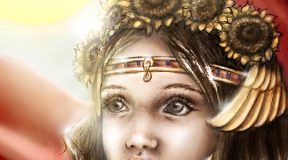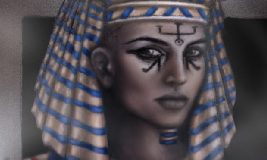
Cartomancy and tarot are divination practices that have fascinated humanity for centuries. While they are often used interchangeably, each has unique characteristics that set them apart. This article explores the similarities and differences between cartomancy and tarot, clarifying misconceptions and demystifying their relationship.
What Is Cartomancy?
Cartomancy is the art of divination using playing cards. Originally, this practice utilized a standard deck of 52 cards (hearts, clubs, diamonds, and spades), the same deck used in traditional card games. Each card carries symbolic meanings that, when interpreted in a spread, provide insights into the past, present, and future of the querent.
Key Features of Cartomancy:
- Standard Deck: It uses a regular playing card deck.
- Simple Meanings: Interpretations tend to be straightforward and less symbolic than tarot.
- Accessibility: Cartomancy is more accessible as it doesn’t require a specialized deck.
- Historical Roots: Its use dates back to the 14th century in Europe, where cards served both as games and tools for divination.
What Is Tarot?
Tarot is a specific form of cartomancy that uses a 78-card deck divided into two main groups: the Major Arcana (22 cards) and the Minor Arcana (56 cards). Each card is rich in symbolism, archetypal imagery, and deep meanings, making tarot a tool for detailed and reflective readings.
Key Features of Tarot:
- Specialized Deck: Includes Major and Minor Arcana, each illustrated with symbolic imagery.
- Spiritual Focus: Tarot goes beyond predicting events, serving as a tool for self-discovery and personal growth.
- Complex Interpretations: Each card has layered meanings based on its position and interaction with others.
- Mystical Origins: Popularized in 15th-century Italy, tarot is linked to esoteric influences like Kabbalah and alchemy.
Key Differences Between Cartomancy and Tarot
While both cartomancy and tarot involve using cards for divination, they differ significantly in approach and depth:
| Aspect | Cartomancy | Tarot |
|---|---|---|
| Type of Deck | Standard deck (52 cards) | Specialized deck (78 cards) |
| Depth | Simple, direct interpretations | Complex, symbolic readings |
| Main Use | Predicting the future | Prediction and self-discovery |
| Accessibility | Easier to learn and practice | Requires deeper study |
| Historical Roots | Older, based on playing cards | Linked to mystical traditions |
Why Are They Confused?
The confusion between cartomancy and tarot arises because both involve card-based divination. Many people begin with cartomancy before diving into the more intricate world of tarot. Additionally, both systems rely on the connection between the querent and the cards to reveal symbolic messages.
Which Should You Choose: Cartomancy or Tarot?
The choice between cartomancy and tarot depends on your preferences and goals:
- Cartomancy: Ideal for quick, straightforward answers to specific questions.
- Tarot: Perfect for a spiritual approach and those willing to invest time in mastering its intricate meanings.
Learning Curve:
- Cartomancy: Easier to grasp due to the familiarity of standard playing cards.
- Tarot: Demands more dedication to understand the interwoven symbolism of the Major and Minor Arcana.
Dispelling Misconceptions
Divination vs. Self-Reflection
Neither cartomancy nor tarot offers absolute glimpses into the future. Instead, they serve as mirrors reflecting your current situation, potential influences, and inner guidance. The cards help you make informed decisions and face challenges with greater awareness.
The Fear Factor
Cartomancy and tarot are not about predicting doom and gloom. While some cards may signify challenges, they often serve as warnings to prepare or prompts to course-correct. The focus remains on personal growth and navigating life with insight.
Practical Uses: Cartomancy vs. Tarot
- Cartomancy: Works well for quick snapshots. It answers direct questions or offers guidance on immediate concerns like upcoming events or decisions.
- Tarot: Takes a broader perspective. It excels at uncovering underlying patterns, exploring personal growth potential, and encouraging introspection.
Conclusion: Tools for Insight and Exploration
Though cartomancy and tarot share roots in card-based divination, they are not the same. Cartomancy is simpler and more direct, while tarot provides a richer, more symbolic experience. Both methods hold value and can complement each other depending on the querent’s needs.
Cartomancy offers quick, focused readings, ideal for immediate questions. Tarot, with its expansive symbolism, dives deeper into uncovering patterns, inspiring personal growth, and fostering reflection. Whether you choose one or both, these tools illuminate paths toward greater self-understanding and a connection with the mysteries of the universe.



